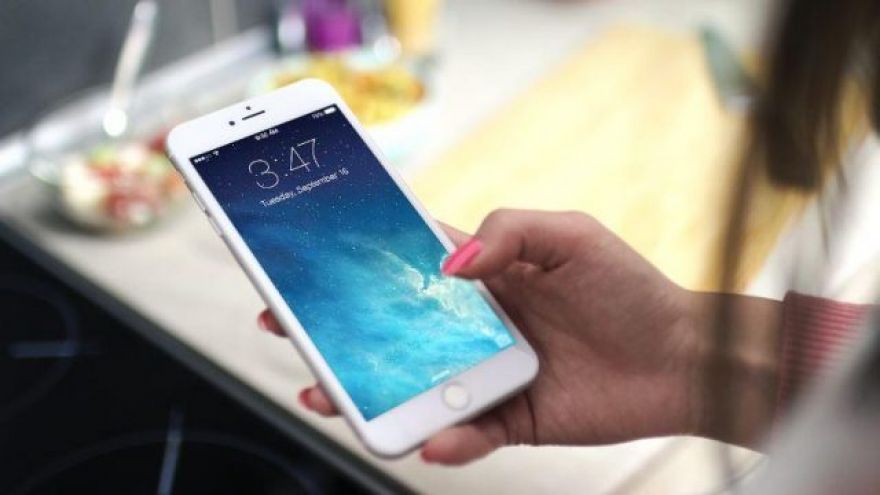
FCC Chairman Ajit Pai Wants Apple to Unlock the iPhone’s FM Radio
It’s not common knowledge in the United States, but the majority of Android devices in-market technically sport FM radio tuners built into their SoCs. It used to be next to impossible to find a smartphone from any vendor in the US that offered an unlocked radio, but that’s improved somewhat in recent years. We’ve seen some audio services pop up that support this capability, and a handful of smartphones and carriers that now support it on various Android devices. Apple, however, has refused to activate any such feature. In the wake of Hurricane Harvey and Irma, however, the FCC is calling for Apple to begin activating its phone’s native capability and making it available to people for emergency communication, if nothing else.
This isn’t the first time this issue has come up, but the various telcos, like Verizon Wireless, AT&T, and T-Mobile have always been . As the cell phone industry has transitioned away from pay-per-minute and towards pay-per-GB of data, they have absolutely no reason to create any capability that gives customers an alternative to data streaming. From AT&T’s perspective, the best thing that could possibly happen would be for YouTube, Twitch, and other streaming sites to go back to MPEG-2 for streaming 1080p content. (Just as H.265 cut video file sizes at a given quality level by 40-60 percent compared with H.264, H.264 cut video file sizes or streaming bandwidth requirements by roughly that amount compared with MPEG-2.) Every customer who listens to an FM radio for music is a customer that isn’t using data to get the same information over their cellular plan.
“It is time for Apple to step up to the plate and put the safety of the American people first,” Pai said on Thursday. “As the Sun Sentinel of South Florida put it, ‘Do the right thing, Mr. Cook. Flip the switch. Lives depend on it.’”
Cell towers on Barbuda won’t be transmitting anytime soon; hurricanes can level telecommunications infrastructure. FM towers broadcasting from areas less affected can be vital communication points.
Pai has a point, for several reasons. First, while cellular companies can still push emergency updates out via text, this presupposes cell towers are still functional. Obviously a storm can take out a radio tower, too–in fact, there were photos of Irma’s damage on Barbuda that showed its telecommunication towers snapped off near the base. But while a hurricane can take out a radio tower, FM radio broadcasts can be picked up dozens of miles away from a radio station, and AM radios can heard even farther than that.
Growing up in Southwest Indiana, I remember my Dad sometimes listening to WGN-AM at night to catch Cubs games, more than 300 miles away. FM radio doesn’t have that kind of range, but it has far more range than cellular radio–and that means there’s a much greater chance that FM broadcasts can still be relayed to storm-damaged areas, even those without power or cellular connectivity. FM radio also consumes a fraction of the power to listen to than cellular radios, which means cell phones that are listening to it will last longer on the same amount of charge.
These kind of capabilities are legitimately useful in emergency situations. Even after a storm or other disaster is over, it can take days, weeks, or months to repair the grid and bring generators back online. In severe cases, like Puerto Rico’s, restoring the power grid could take years, after Maria more-or-less destroyed it at every level. Even after Harvey had weakened and was no longer a direct threat to life and limb, it continued to dump water into Houston. Officials had to open the spillways of several reservoirs to avert a potentially catastrophic collapse, at a time when over a hundred thousand people were without power. It’s true that disasters like Harvey and Irma are rare events, but that doesn’t mean effective communication channels aren’t critically needed in such emergencies.
Apple has rebuffed Pai’s call, Ars Technica:
Apple cares deeply about the safety of our users, especially during times of crisis and that’s why we have engineered modern safety solutions into our products. Users can dial emergency services and access Medical ID card information directly from the Lock Screen, and we enable government emergency notifications, ranging from Weather Advisories to AMBER alerts. iPhone 7 and iPhone 8 models do not have FM radio chips in them nor do they have antennas designed to support FM signals, so it is not possible to enable FM reception in these products.